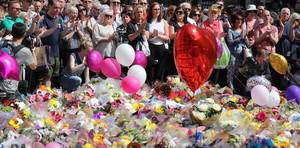Manchester attackManchester attack: we are in an ‘arms race’ against ever adapting terror networks
The Manchester attack illustrates how Western society is locked in an arms race with an ever adapting group of terrorists who keep changing their tactics and targets. Winning the battle depends on a number of complex factors and the acceptance that on the morning of 23 June Britain woke up to a new reality. We need to do more to consider the role of intelligence. Often the first person to know or suspect something about someone moving towards, or involved in, acts of terrorism will be those closest to them: their friends, family and community insiders. Their willingness to come forward and share knowledge, suspicions and concerns with authorities is critical because they offer a first line of defense. We are currently finding out more about the barriers and challenges people face in sharing information or cooperating with authorities, as well as what motivates them to surmount these challenges. This would tell us why those with concerns can fail to engage fully with government reporting campaigns. At the moment this is a critical blind spot in current counter-terrorism thinking and strategy.

Flower memorial for the Manchester bombing victims // Source: theconversation.com
The Manchester attack illustrates how Western society is locked in an arms race with an ever adapting group of terrorists who keep changing their tactics and targets. Winning the battle depends on a number of complex factors and the acceptance that on the morning of 23 June Britain woke up to a new reality. A world where your teenage daughter can be killed while doing nothing more than attending a pop concert became a reality.
A suicide bomber entered the foyer at the Manchester Arena and detonated an IED loaded with shrapnel. The plan was simple, kill as many revelers as possible and sacrifice yourself in the effort. Job done. The most deadly terrorist attack in Britain in a decade.
What will be disconcerting for those tasked with keeping people safe is that this slaughter occurred at a time of already heightened security. The authorities have long been aware that crowded places offer attractive targets for terrorists and have planned for that eventuality. This is why major sporting and entertainment venues undergo site assessments and employ a range of measures aimed at blocking off attacks or at least mitigating their worst effects. These measures can range from physical security (such as fixed bollards) to prevent IEDs in vehicles from exploding near to a venue, surveillance to detect suspicious people or behavior (principally CCTV systems) and personnel security (venue access control and patrols).
These site specific measures are overlaid by national policing and intelligence efforts aimed at detecting, monitoring and neutralizing any creditable terrorist threats – currently operating at the highest “critical” threat level. But why did these efforts fail in Manchester?
Three main challenges
There are at least three central challenges in these circumstances. First, attackers are opportunistic, adaptive and innovative in their methods, responding quickly to new security measures, driving an arms race between them and the countermeasures deployed by defenders. The one who gets ahead in the race is determined by who innovates and deploys the adaption faster. This results in a continual disruption in the balance of advantage between authorities and adversaries.
